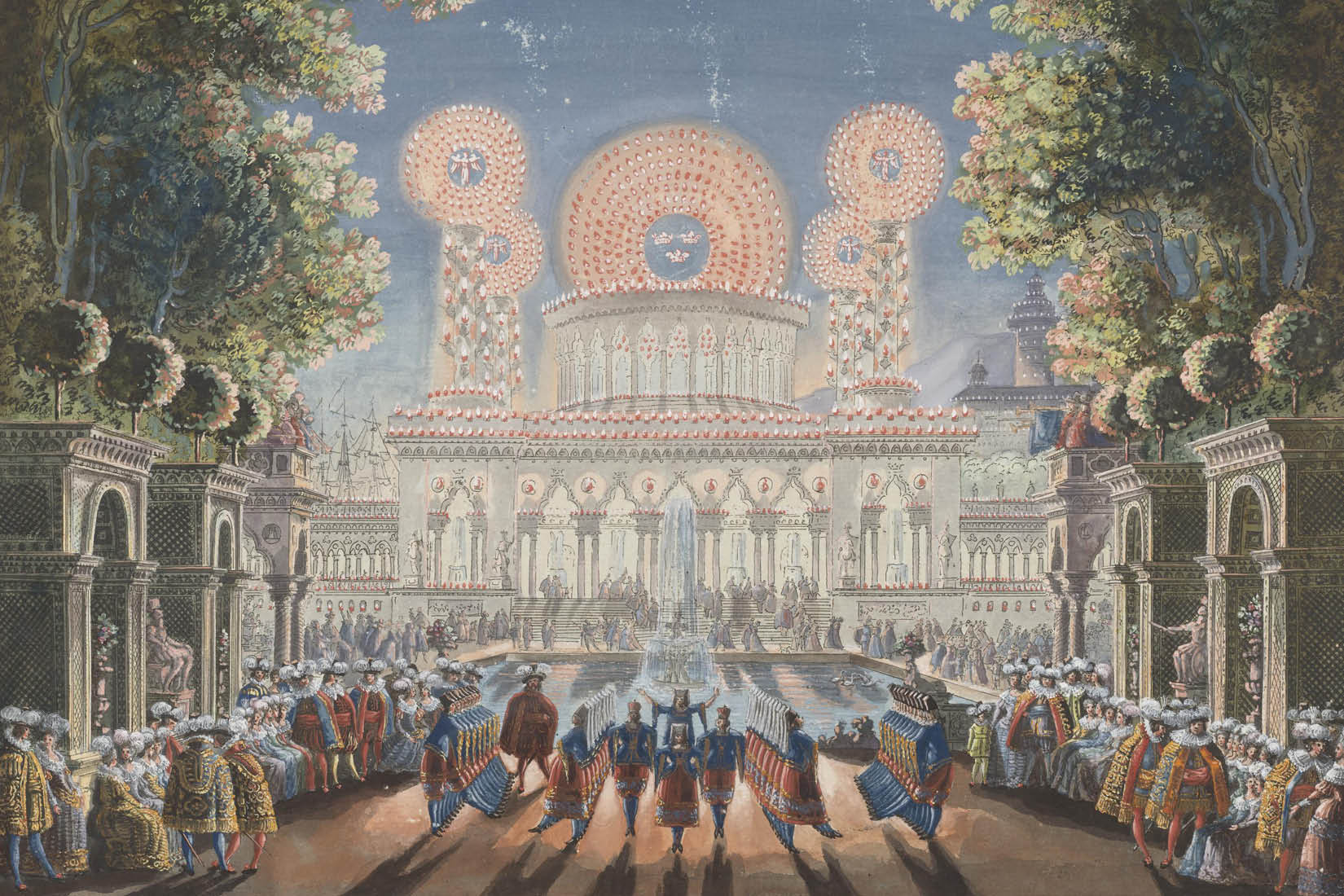Fifty years ago, one of the Institut suédois’s first exhibitions was dedicated to Louis-Jean Desprez. This was followed, 20 years later, by a retrospective at the Louvre. Today, the Institut suédois is devoting a new exhibition to his work, highlighting his central role in the artistic exchanges that took place between France and Sweden in the 18th century.
Born in Auxerre, Desprez entered the Académie Royale d’Architecture in the mid-1760s, where he rapidly distinguished himself. In 1768, he began training with the architect and theatre designer Charles de Wailly, whose influence left a lasting mark on his style. After several attempts, he was awarded the Grand Prix de Rome in 1776 and embarked on a decisive trip to Italy the following year. In 1784, he met Gustav III of Sweden, who, drawn by his imagination and his artistic expression, invited him to Stockholm to produce stage designs.
In the years that followed, Desprez revolutionised theatrical set design in Europe with his spectacular creations. The artistic partnership between Gustav III and Desprez was one of the most fruitful collaborations between a commissioner and an artist in history. The king is quoted as declaring that: ‘There are only two people in Sweden with imagination: Desprez and myself.’
After the monarch was assassinated in 1792, however, the artist fell from grace and was unable to obtain the protection of other sovereigns. Desprez died on 19 March 1804, alone and destitute. By a strange twist of fate, his home in Stockholm lies just a stone’s throw from the Nationalmuseum, where most of his work can be found today.
Inspired by the ruins of Antiquity, imaginary landscapes and monumental architecture, Desprez follows in the tradition of Giovanni Battista Piranesi and Hubert Robert. His works reflect a fascination for the dark side of the Enlightenment, a world haunted by the ephemeral grandeur of lost civilisations. Architect, painter and stage designer, he navigates between France and Sweden, heaven and earth, past and present, imagination and reality.
This exhibition restores to his rightful place an artist whose work illustrates the tensions and aspirations of the changing world of the 18th century. Revealing his visionary genius, it offers a new reading of his legacy, which remains relevant today.
Exhibition in collaboration with Nationalmuseum, Stockholm, which now manages the collection and permanent exhibition of the Institut suédois.
Curator: Otto Ruin, within the framework of the Nationalmuseum’s “young researchers” programme.
Scientific advisor: Martin Olin, director of the Nationalmuseum collections.
Project manager: Maria Ridelberg-Lemoine, heritage and collections manager of the Institut suédois.
This project has been made possible thanks to the generous donation from the Björn and Inger Savén Foundation. Thanks also to the Jacob Wallenberg Foundation for its support.
Useful information
- Free admission, no prior reservation required.
